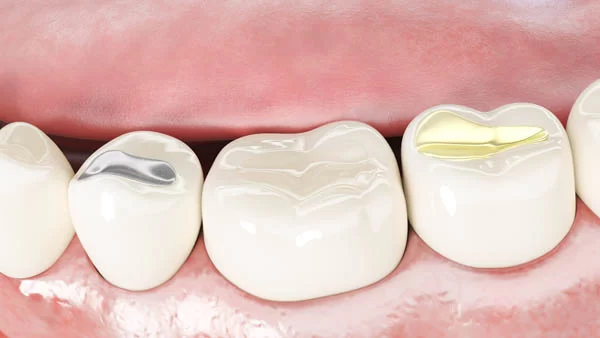
What to Know About Dental Fillings for Cavities: Types, Procedures, and Options
- Understanding Cavities and Fillings
- Types of Dental Fillings
- The Dental Filling Procedure
- Choosing the Right Filling for Your Cavity
- Common Questions About Dental Fillings
Understanding Cavities and Fillings
Cavities, also known as dental caries or tooth decay, occur when bacteria in the mouth produce acids that erode the enamel of your teeth. Over time, this damage can lead to holes or cavities in your teeth. To prevent further damage and restore the function of the tooth, your dentist may recommend a filling. A dental filling is a material placed in a cavity to restore the tooth's shape and prevent further decay.
While many people dread the thought of fillings, they are a vital part of maintaining long-term dental health. Fillings are designed to be durable, comfortable, and effective in protecting the tooth from further damage. In this article, we will discuss the different types of dental fillings available, the procedure for getting a filling, and how to choose the best filling for your cavity.
Types of Dental Fillings
There are several different types of dental fillings available, each with its own advantages and considerations. Choosing the right filling depends on various factors, including the location and size of the cavity, your dental health, and your aesthetic preferences. Here are the most common types of dental fillings:
1. Silver Fillings (Amalgam)
Silver fillings, also known as amalgam fillings, are a popular and affordable option for filling cavities, especially in the back teeth. These fillings are durable and can last for many years. However, they are less aesthetically pleasing due to their silver color, which may be noticeable if used on front teeth.
2. Composite Fillings
Composite fillings are made from a tooth-colored resin that can be shaped to match the natural contours of your teeth. These fillings are more aesthetically pleasing than silver fillings and are often used for cavities in visible areas. Composite fillings may not last as long as amalgam fillings, but they are a great option for those who prioritize cosmetic appearance.
3. Ceramic Fillings
Ceramic fillings are made from porcelain or a similar material and are highly durable and stain-resistant. These fillings are tooth-colored, making them a good choice for people who want a natural-looking restoration. However, ceramic fillings can be more expensive than other types.
4. Glass Ionomer Fillings
Glass ionomer fillings are made from a combination of glass and acrylic materials. They release fluoride, which can help protect the tooth from future decay. These fillings are typically used for smaller cavities and areas that aren't subject to heavy chewing pressure. They are also often used for fillings in children’s teeth.
The Dental Filling Procedure
The process of getting a dental filling is generally straightforward and typically involves the following steps:
1. Examination and X-Rays
Your dentist will start by examining your teeth and taking X-rays to assess the extent of the cavity. This helps determine whether a filling is necessary and what type of filling would be best for your situation.
2. Local Anesthesia
If the cavity is deep, the dentist may administer a local anesthetic to numb the area around the affected tooth. This ensures that you remain comfortable and pain-free throughout the procedure.
3. Removing Decay
Once the area is numbed, the dentist will use a drill or laser to remove the decayed part of the tooth. This step ensures that the cavity is cleaned out and ready for the filling.
4. Filling the Cavity
After the decay is removed, the dentist will clean the cavity to ensure it's free of bacteria. Then, the chosen filling material will be placed into the cavity. For composite or ceramic fillings, the material is typically applied in layers and hardened with a special light. For amalgam fillings, the material is packed into the cavity while it's still malleable.
5. Shaping and Polishing
Once the filling is in place, the dentist will shape it to match the contours of your tooth. This ensures that the filling fits comfortably and doesn’t affect your bite. Finally, the filling will be polished to smooth it and make it look as natural as possible.
Choosing the Right Filling for Your Cavity
Choosing the right filling depends on several factors, including:
1. Location of the Cavity
If the cavity is in a highly visible area, like the front teeth, you may want to choose a filling that blends with the natural color of your teeth, such as composite or ceramic fillings. For cavities in the back teeth, where aesthetics are less of a concern, silver or amalgam fillings may be a more practical choice.
2. Durability and Longevity
Some fillings, like amalgam, are known for their durability and can last for many years, especially in areas where there’s significant chewing pressure. Composite fillings, while more aesthetically pleasing, may wear down faster, especially in high-stress areas.
3. Cost
Cost is another important consideration. Amalgam fillings tend to be the least expensive option, while ceramic fillings can be quite costly. It's important to discuss your budget with your dentist and consider the best option for your needs.
Common Questions About Dental Fillings
Here are some frequently asked questions about dental fillings:
1. How long do dental fillings last?
The lifespan of a dental filling depends on the type of material used. Silver fillings can last up to 15 years, while composite fillings may last 5-10 years. Ceramic fillings can last 10-15 years, and glass ionomer fillings typically last 5-8 years.
2. Will a dental filling hurt?
Most patients experience little to no discomfort during the filling procedure, especially with the use of local anesthesia. After the procedure, it’s normal to feel some sensitivity in the treated area, but this usually subsides after a few days.
3. Can a filling fall out?
While dental fillings are designed to be durable, they can occasionally become loose or fall out, especially if the filling is old or if you experience trauma to the tooth. If this happens, contact your dentist promptly for evaluation and repair.
If you’re looking to learn more about dental fillings and other restorative dental care options, visit Dentistry Toothtruth for expert advice and solutions to keep your smile healthy and bright!







 Worcester Dentist - Union Dental - MA4.0 (218 review)
Worcester Dentist - Union Dental - MA4.0 (218 review) Scott Silverman, MD3.0 (6 review)
Scott Silverman, MD3.0 (6 review) Dental365 - Bellmore4.0 (318 review)
Dental365 - Bellmore4.0 (318 review) Bay Area Kids Dentist Sunnyvale4.0 (135 review)
Bay Area Kids Dentist Sunnyvale4.0 (135 review) LAKE VISTA DENTISTRY4.0 (207 review)
LAKE VISTA DENTISTRY4.0 (207 review) Southside Orthodontics - Your Colonial Heights and Chesterfield Orthodontist4.0 (274 review)
Southside Orthodontics - Your Colonial Heights and Chesterfield Orthodontist4.0 (274 review) The Importance of Oral Health Education During Pregnancy for a Healthy Pregnancy
The Importance of Oral Health Education During Pregnancy for a Healthy Pregnancy Best Tips for Brushing Your Teeth Properly for Healthy Gums: Essential Techniques for Oral Health
Best Tips for Brushing Your Teeth Properly for Healthy Gums: Essential Techniques for Oral Health Why Skipping Dental Checkups Can Lead to Bigger Oral Health Problems
Why Skipping Dental Checkups Can Lead to Bigger Oral Health Problems Advantages of Porcelain Dental Restorations
Advantages of Porcelain Dental Restorations How Can Diabetes Cause Tooth and Gum Problems? Preventing and Managing Oral Health Issues
How Can Diabetes Cause Tooth and Gum Problems? Preventing and Managing Oral Health Issues Healthy Habits for Promoting Good Oral Health and Hygiene: Tips for a Healthy Smile
Healthy Habits for Promoting Good Oral Health and Hygiene: Tips for a Healthy Smile